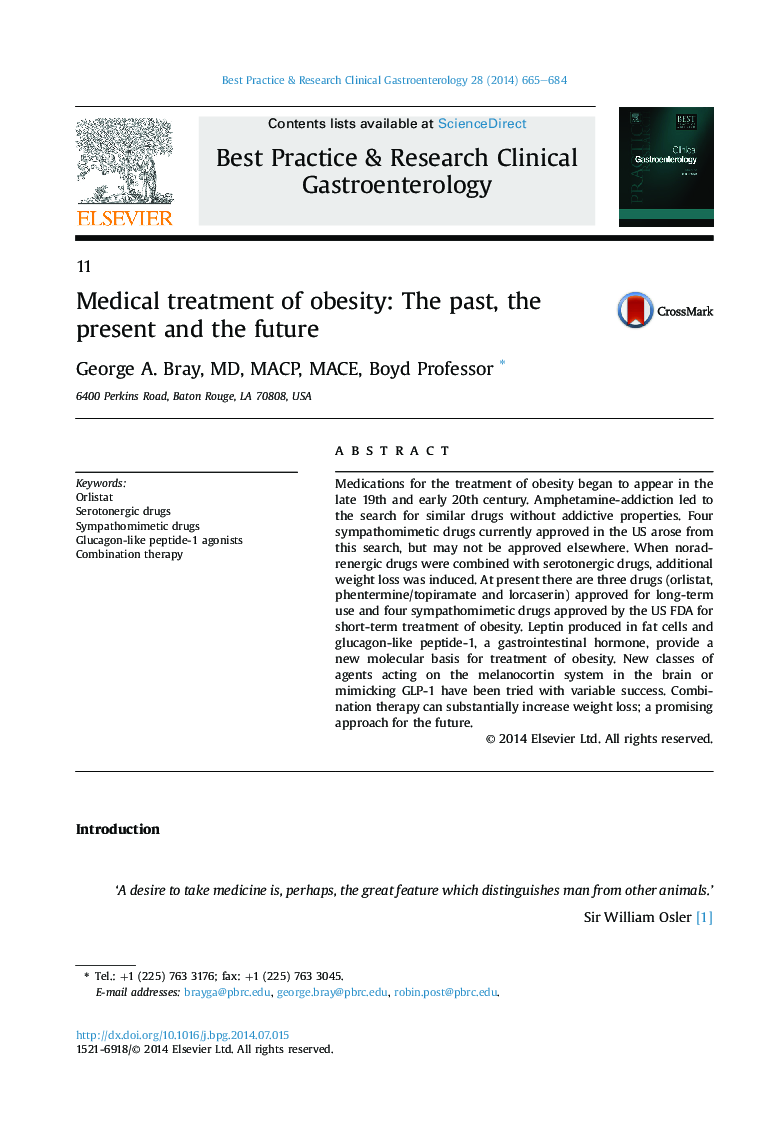| کد مقاله | کد نشریه | سال انتشار | مقاله انگلیسی | نسخه تمام متن |
|---|---|---|---|---|
| 3254024 | 1207172 | 2014 | 20 صفحه PDF | دانلود رایگان |
Medications for the treatment of obesity began to appear in the late 19th and early 20th century. Amphetamine-addiction led to the search for similar drugs without addictive properties. Four sympathomimetic drugs currently approved in the US arose from this search, but may not be approved elsewhere. When noradrenergic drugs were combined with serotonergic drugs, additional weight loss was induced. At present there are three drugs (orlistat, phentermine/topiramate and lorcaserin) approved for long-term use and four sympathomimetic drugs approved by the US FDA for short-term treatment of obesity. Leptin produced in fat cells and glucagon-like peptide-1, a gastrointestinal hormone, provide a new molecular basis for treatment of obesity. New classes of agents acting on the melanocortin system in the brain or mimicking GLP-1 have been tried with variable success. Combination therapy can substantially increase weight loss; a promising approach for the future.
Journal: Best Practice & Research Clinical Gastroenterology - Volume 28, Issue 4, August 2014, Pages 665–684
